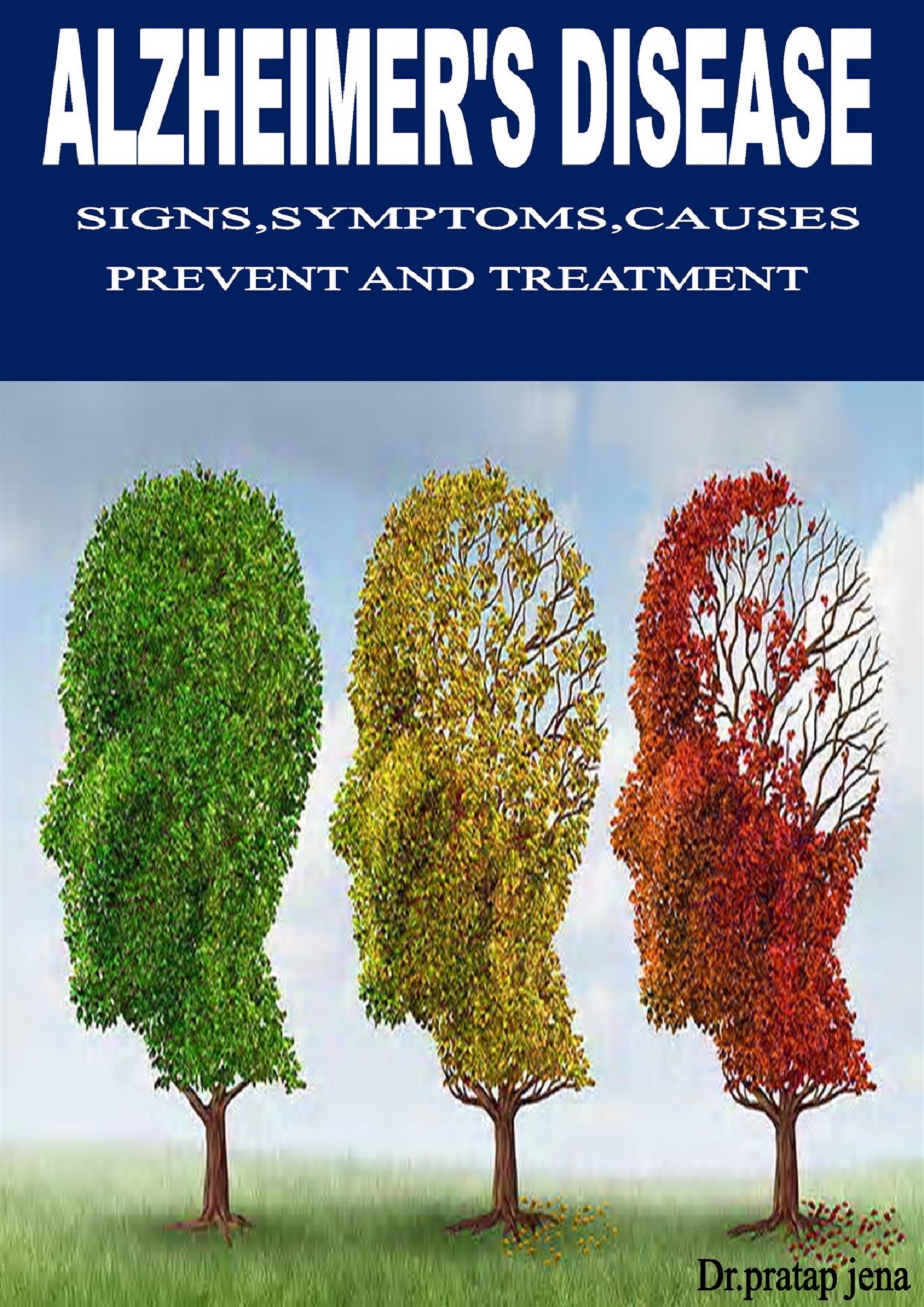
Alzheimer's Disease Signs, Symptoms ,Causes , Prevent & Treatment
On Sale
$3.00
$3.00
Alzheimer’s disease is a form of dementia. It is the most common form of dementia. Dementia is a term used to describe memory loss and loss of other intellectual capabilities, like reasoning and thinking, that are severe enough to cause problems in daily life. Alzheimer’s disease is named after Dr. Alois Alzheimer, who discovered the disease in 1906.
Alzheimer’s largest risk factor is aging. However, it is not a normal part of aging. While the majority of people who have Alzheimer’s are over the age of 65, it can happen in someone younger. Early-onset Alzheimer’s is when the disease becomes noticeable in someone in their 40s or 50s. About 5 percent of people with this disease are in this age group.
This is a disease that progressively gets worse over time. In late stages, someone with Alzheimer’s may not be able to communicate or reason with those around them. They will also eventually need full-time care for everyday life. According to the Alzheimer’s Association, it is the 6th leading cause of death in the United States. The average life span of someone with the disease is eight years after diagnosis, but they can live up to 20 years depending on other health conditions. There is no cure at this time. However, there are treatments that can slow the progression and improve the quality of life for those with the disease.
•This normally influences the parts of the mind that control subjective (scholarly) capacities, for example, they should, memory, and dialect.
•Levels of specific synthetic concoctions that bear messages the mind (neurotransmitters) are low.
•The coming about misfortunes in scholarly capacity is called dementia when they are sufficiently extreme to meddle with regular working.
Alzheimer's disease influences for the most part individuals matured 60 years or more established.
•The danger of building up Alzheimer's disease keeps on expanding with age. Individuals matured 80 years, for instance, have an essentially more serious risk than individuals matured 65 years.
•Millions of individuals worldwide have Alzheimer's disease. Numerous others have mellow, or negligible, subjective hindrance, which oftentimes goes before dementia.
•The number of individuals with Alzheimer's disease is required to rise generously in the following couple of decades in view of the maturing of the populace.
•The disease influences all races and ethnic gatherings.
•It appears to influence a bigger number of ladies than men.
Alzheimer's disease is a dynamic disease, which implies that it deteriorates after some time. It can't be cured or turned around by any known treatment.
•The indications regularly are inconspicuous at first.
•Over time, individuals with the Disease lose their capacity to think and reason unmistakably, judge circumstances, take support of issues, focus, recollect valuable data, deal with themselves, and even talk.
•Loss in conduct and identity are normal.
•People with mellow Alzheimer's Disease more often than not require close supervision and help with regular undertakings, for example, cooking, shopping, and paying bills.
•People with serious Alzheimer's Disease can do little individually and require finish full-time mind.
Along these lines, Alzheimer's disease is viewed as a noteworthy general medical issue.
•The cost of administering to individuals with the disease is assessed at over $100 billion every year in the United States. The normal yearly cost per influenced individual is $20,000 to $40,000, contingent upon the seriousness of the disease.
•That cost doesn't consider the loss of personal satisfaction for the influenced individual, nor the physical and passionate toll on family guardians.
Alzheimer’s largest risk factor is aging. However, it is not a normal part of aging. While the majority of people who have Alzheimer’s are over the age of 65, it can happen in someone younger. Early-onset Alzheimer’s is when the disease becomes noticeable in someone in their 40s or 50s. About 5 percent of people with this disease are in this age group.
This is a disease that progressively gets worse over time. In late stages, someone with Alzheimer’s may not be able to communicate or reason with those around them. They will also eventually need full-time care for everyday life. According to the Alzheimer’s Association, it is the 6th leading cause of death in the United States. The average life span of someone with the disease is eight years after diagnosis, but they can live up to 20 years depending on other health conditions. There is no cure at this time. However, there are treatments that can slow the progression and improve the quality of life for those with the disease.
•This normally influences the parts of the mind that control subjective (scholarly) capacities, for example, they should, memory, and dialect.
•Levels of specific synthetic concoctions that bear messages the mind (neurotransmitters) are low.
•The coming about misfortunes in scholarly capacity is called dementia when they are sufficiently extreme to meddle with regular working.
Alzheimer's disease influences for the most part individuals matured 60 years or more established.
•The danger of building up Alzheimer's disease keeps on expanding with age. Individuals matured 80 years, for instance, have an essentially more serious risk than individuals matured 65 years.
•Millions of individuals worldwide have Alzheimer's disease. Numerous others have mellow, or negligible, subjective hindrance, which oftentimes goes before dementia.
•The number of individuals with Alzheimer's disease is required to rise generously in the following couple of decades in view of the maturing of the populace.
•The disease influences all races and ethnic gatherings.
•It appears to influence a bigger number of ladies than men.
Alzheimer's disease is a dynamic disease, which implies that it deteriorates after some time. It can't be cured or turned around by any known treatment.
•The indications regularly are inconspicuous at first.
•Over time, individuals with the Disease lose their capacity to think and reason unmistakably, judge circumstances, take support of issues, focus, recollect valuable data, deal with themselves, and even talk.
•Loss in conduct and identity are normal.
•People with mellow Alzheimer's Disease more often than not require close supervision and help with regular undertakings, for example, cooking, shopping, and paying bills.
•People with serious Alzheimer's Disease can do little individually and require finish full-time mind.
Along these lines, Alzheimer's disease is viewed as a noteworthy general medical issue.
•The cost of administering to individuals with the disease is assessed at over $100 billion every year in the United States. The normal yearly cost per influenced individual is $20,000 to $40,000, contingent upon the seriousness of the disease.
•That cost doesn't consider the loss of personal satisfaction for the influenced individual, nor the physical and passionate toll on family guardians.

